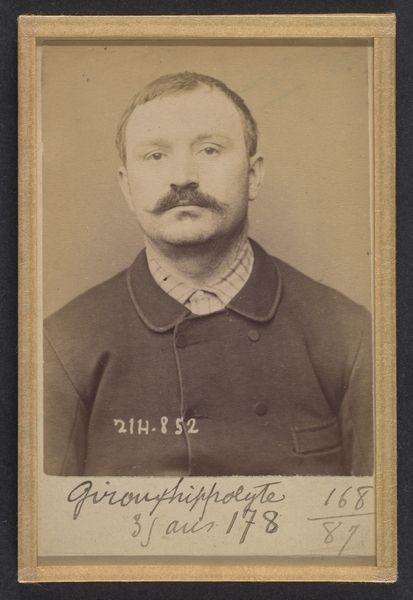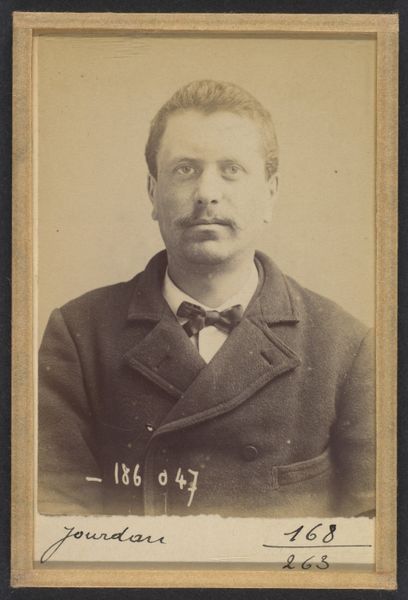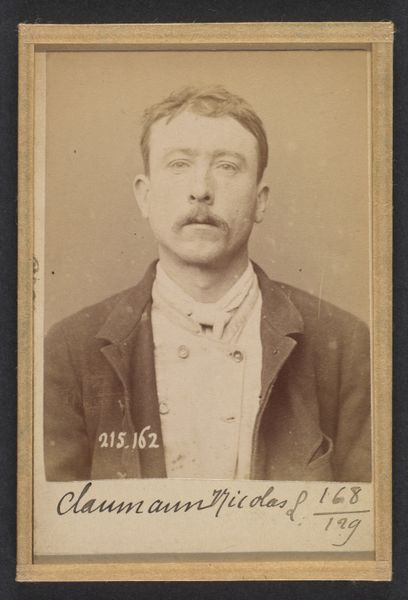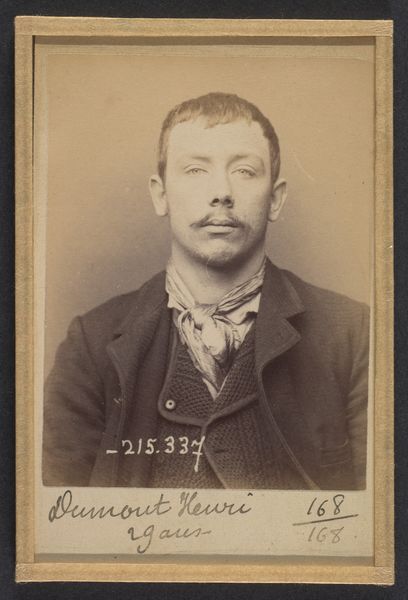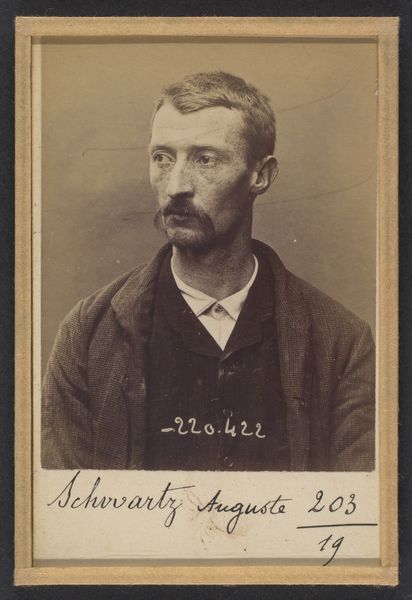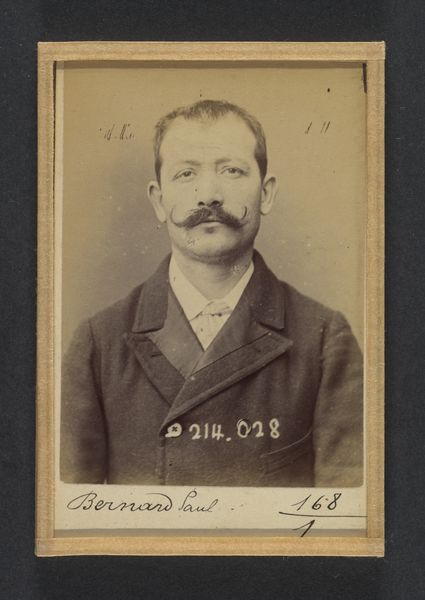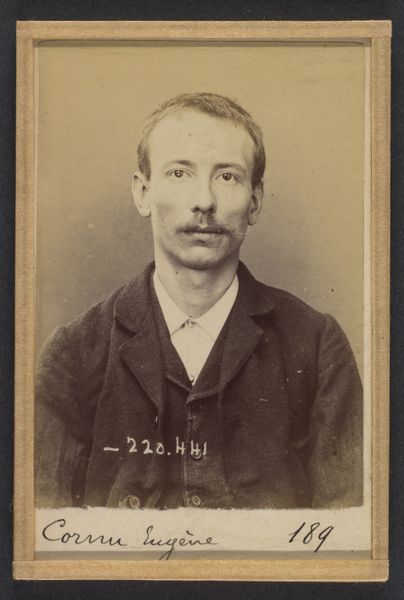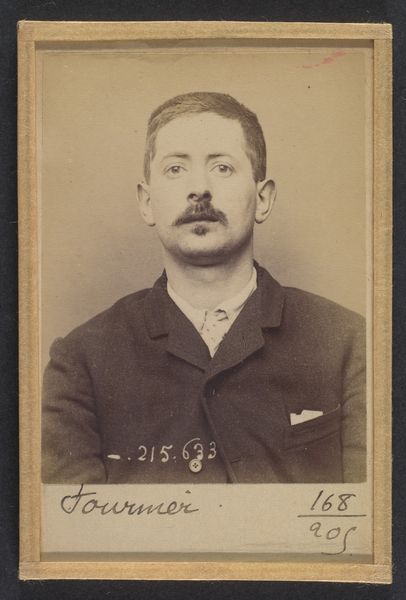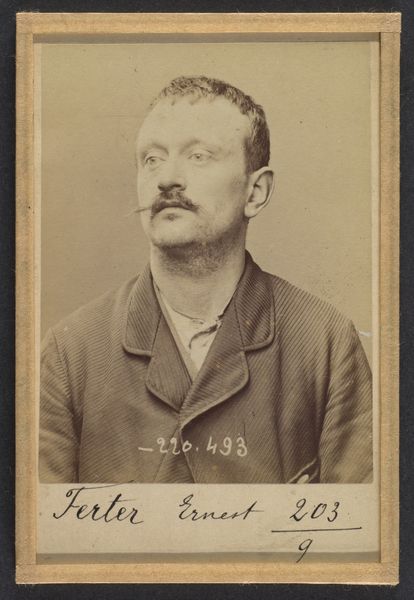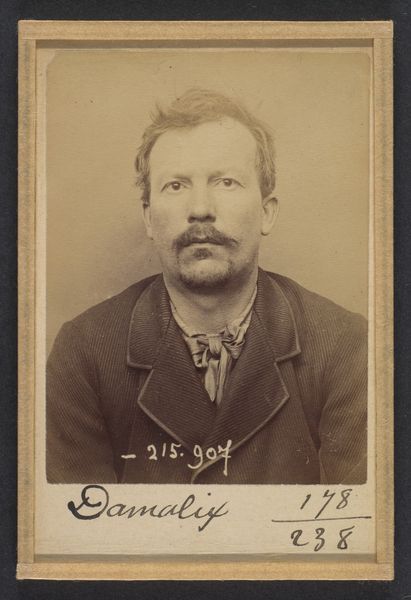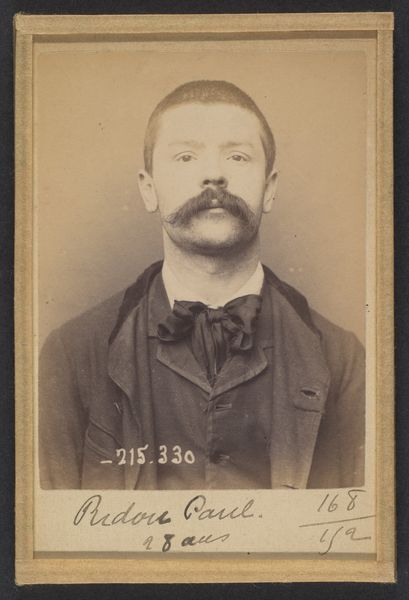
Mainfroy. Albert, Pierre. 41 ans, né le 7/4/52 à Courbevoie (Seine). Imprimeur. Anarchiste. 3/7/94. 1894
0:00
0:00
daguerreotype, photography
#
portrait
#
daguerreotype
#
photography
#
poster
Dimensions: 10.5 x 7 x 0.5 cm (4 1/8 x 2 3/4 x 3/16 in.) each
Copyright: Public Domain
Curator: The piece before us, an 1894 daguerreotype, presents a striking portrait. It’s labeled "Mainfroy. Albert, Pierre. 41 ans, né le 7/4/52 à Courbevoie (Seine). Imprimeur. Anarchiste. 3/7/94." The photographer is listed as Alphonse Bertillon. Editor: My immediate impression is one of melancholy. There’s a vulnerability in his eyes that contrasts sharply with his somewhat defiant mustache and the starkness of the photographic style. It feels less like a portrait and more like an attempt at cataloging a soul. Curator: Indeed. Bertillon was a French police officer and biometrics researcher. This image comes from his system of identifying criminals, the Bertillonage method. This portrait transcends a mere likeness, becoming evidence, a document of its time shaped by systems of power. The inscription betrays that: name, date of birth, profession, the reason for which his image was taken… It feels more like an entry in an official register than an artistic attempt. Editor: The direct gaze he gives us speaks volumes, though. Notice the careful grooming contrasting the disarray of his hair. A printer and an anarchist. Print, the dissemination of ideas, the revolutionary possibilities afforded to social dissent. This photo has, ironically, become a kind of symbol of the oppressed—of counter-narratives documented. Curator: It’s precisely that duality which is so captivating. Bertillon sought to codify and control identity through visual record, but the image has since been received, exhibited, and understood through varied perspectives, particularly after its later appropriation by the Met Museum of Art, acquiring new significances through its displacement from police archives to the museum context. Editor: Ultimately, though born out of the controlling practices of late 19th century governance, what remains is not just the picture of the oppressor's cataloging efforts. Here we are now discussing Mainfroy himself and his resistance. His gaze almost dares us to see beyond the label, to find the humanity beneath the accusation. Curator: Absolutely. The life of this particular piece took an unusual path: from police record, to a representation of oppression and finaly, perhaps even subversively, into one of defiant dignity. Editor: It is the power of the visual to transcend its original purpose, that transforms an instrument of social control into a powerful icon of resistance and reflection.
Comments
No comments
Be the first to comment and join the conversation on the ultimate creative platform.

